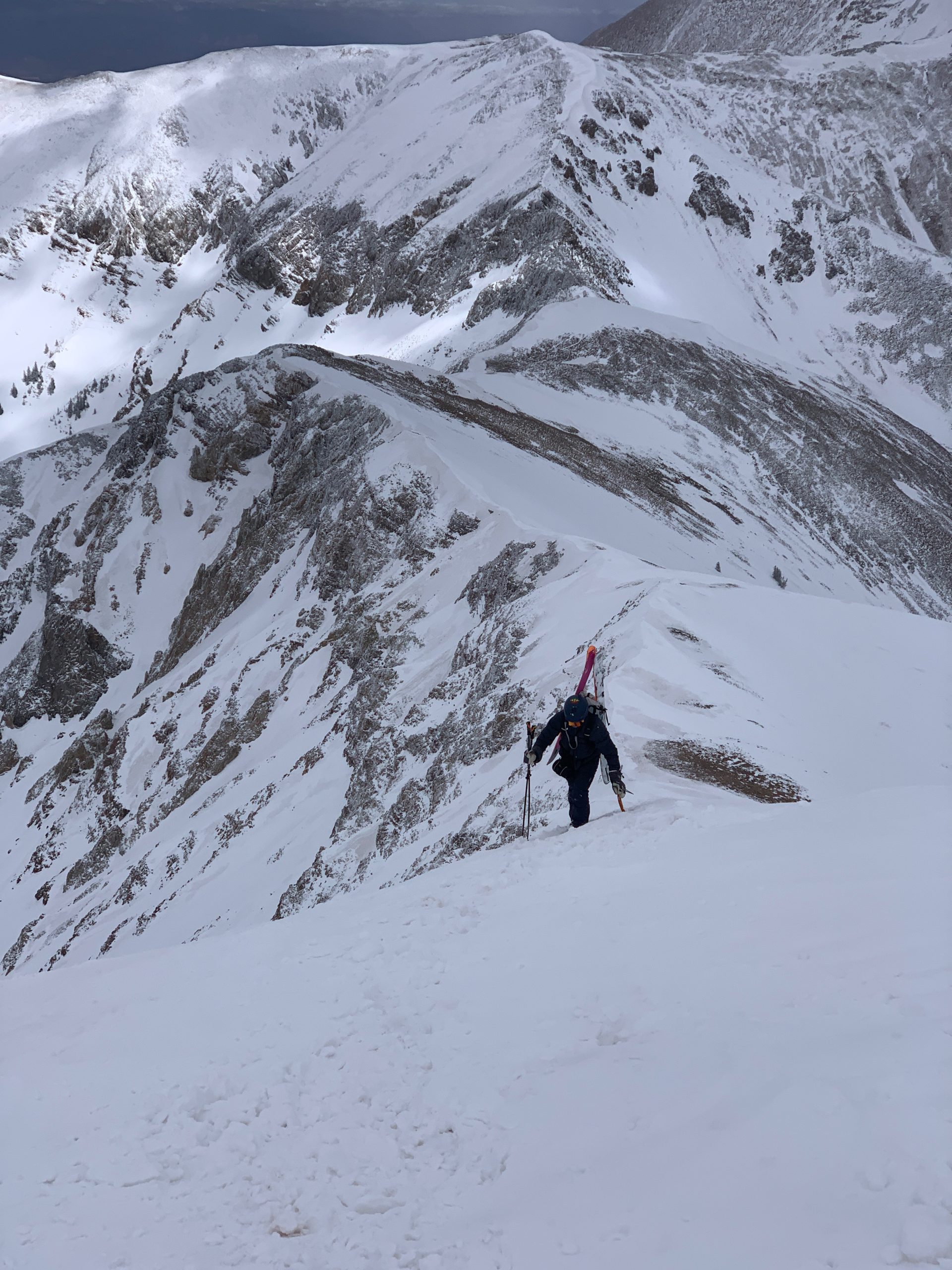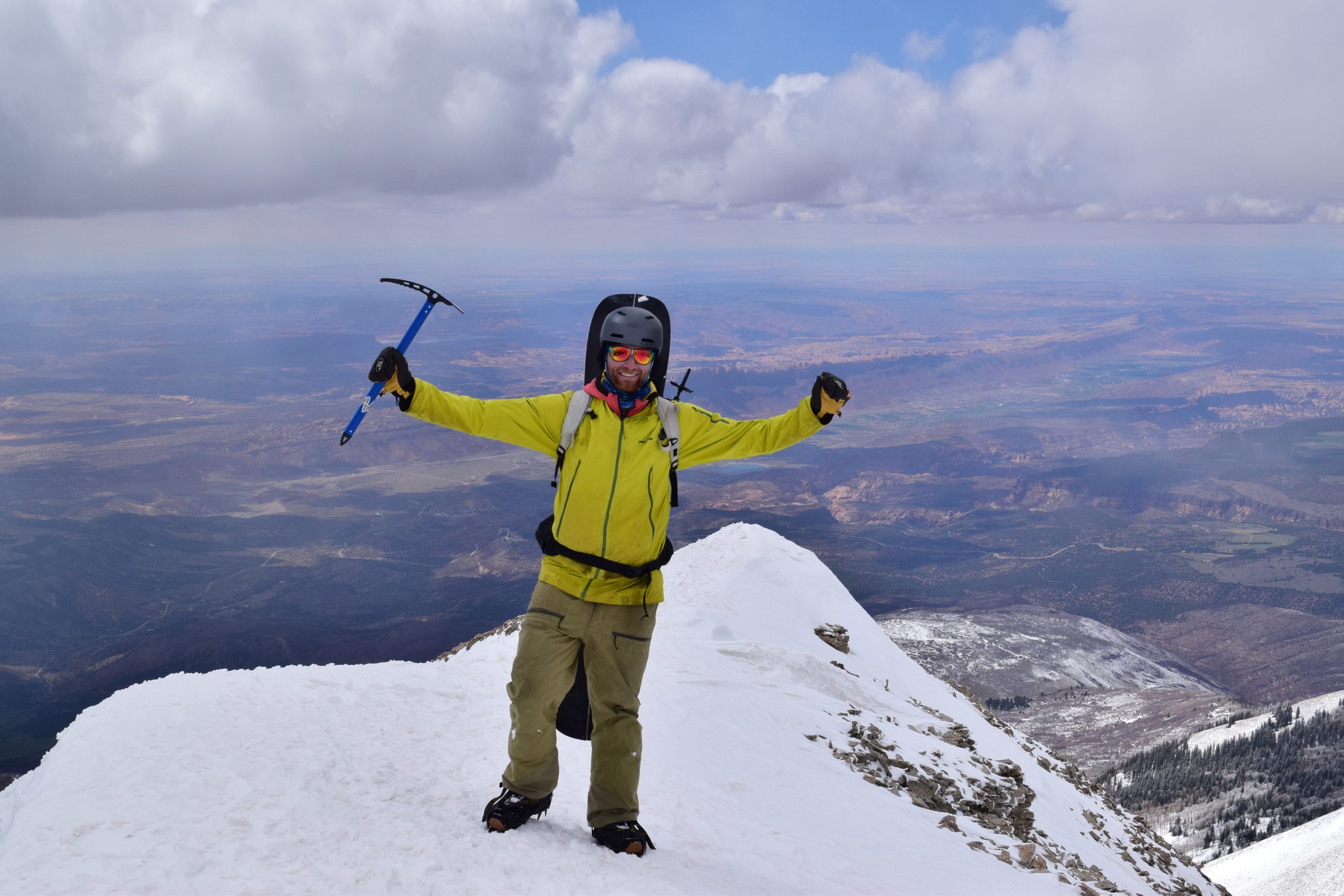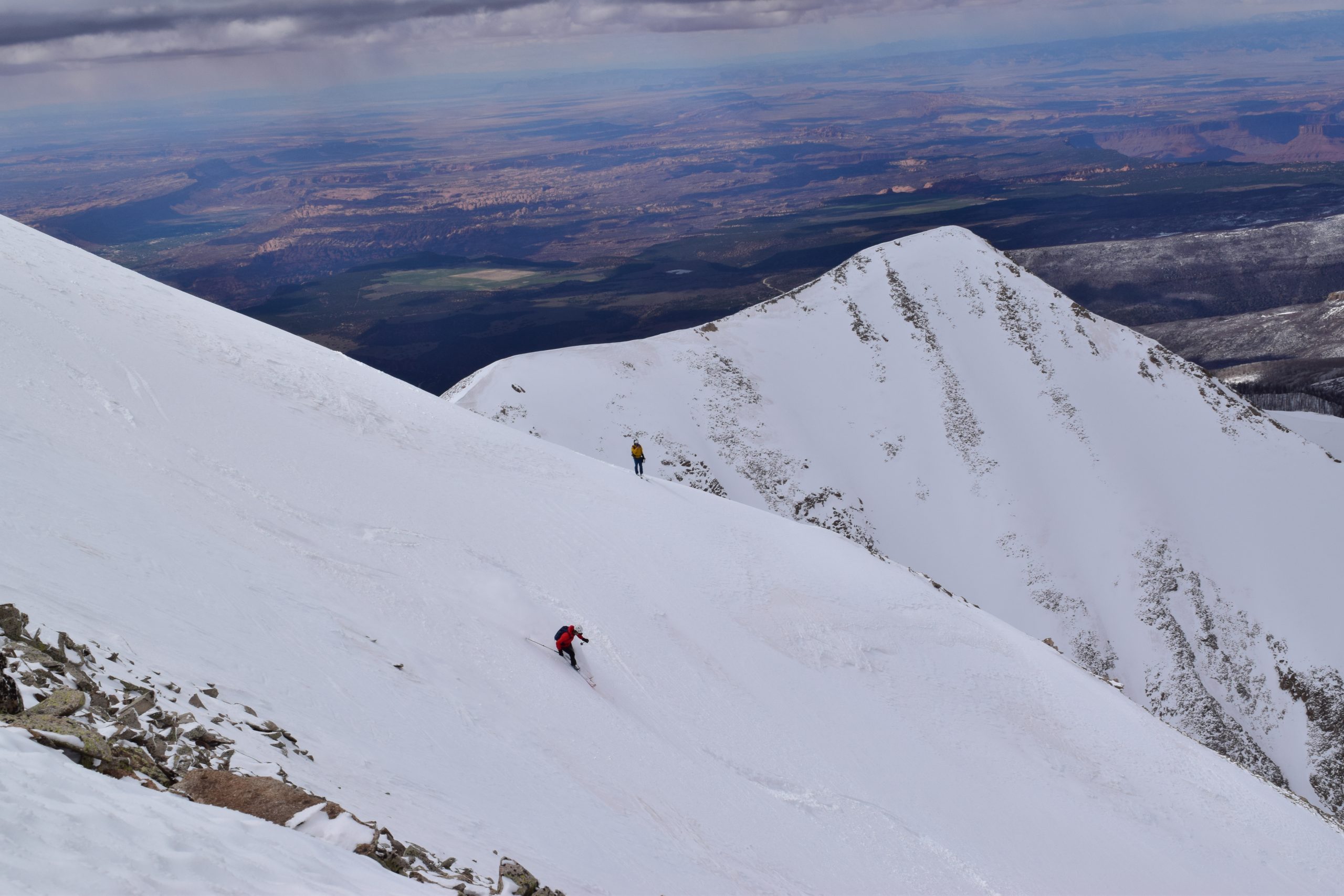
The La Sals scare me. Something is just a little off about them.
The entire mood of the Southern Utah mountain range can change in a heartbeat; they’ll be friendly and inviting when the sun is shining, and then screaming at you to leave when cloud cover rolls in out of nowhere and winds start howling at 50 mph. The energy here is powerful and in your face.

We made it to the range just before midnight on Friday. It was windy and snowing. Friends Connor and Gavin had picked a lovely spot off the side of the road for all five of us to cowboy camp that night. We were here on a strike mission to ski the northeast face of Mount Tukuhnikivatz—one of the 50 classic ski descents of North America. Tomorrow was going to be a powder day.
We rolled out of our frosted sleeping bags, scrounged a less than scrumptious breakfast, and booked it towards the Geyser Pass trailhead. We were not alone when we got there.
Five inches of late-April powder piqued the interest of several parties of desert ski tourers. The trailhead was packed and with good reason. By the time we got up to Gold Basin some two hours later, our hopes were confirmed; cold, dry, blower powder snow from top to bottom.

We toured through a cemetery of scorched trees left behind by the Pack Creek Fire last year on the way up to Gold Basin. It was eerie. As we gained elevation we made it through the burn zone and into beaming, snow-covered aspens that were illuminated by the morning sunshine. Not long after that we had our first glance at Mount Tuk.
Steep, giant, and intimidating are how I would describe my first impressions of 12,482′ Mount Tukuhnikivatz. It’s like an angry pyramid that rudely rises into the sky, with its equally daunting partner in crime ‘Little Tuk’ just across the saddle to the west. Both mountains sport several thousand-foot-long classic ski descents with painted red rock desert in the background. Both mountains want to kill you. Spring is really the only time you can ski these brutes—a stable snowpack is a must.
We skinned past Tuk’s north ridge and the snow got deeper and softer. As we fixed our gazes upwards, we could see and hear several parties in front of us skiing what appeared to be awesome, blower powder. The sun was out and we were eager.

The skinner ran almost all the way up to Tuk’s summit ridge. The last 50-feet-or-so you had to bootpack up half snowed-over scree before making the final quarter-mile push to the summit. By now our crampons and ice axes were out. The sun had fled and dark, ominous storm clouds and strong, bone-chilling winds had taken its place. Our stomachs couldn’t help but develop that ‘sinking pit’ feeling as the visibility quickly deteriorated.
Devin and I decided to make a push for the summit and scope out both Tuklear Reaction, aka Tuk’s southeast face, and Red Snow Cirque, the face between Mount Tukuhnikivatz and Little Tuk, to see what they looked like. Gavin, Connor, and Aidan were content with dropping the northeast face of Tuk which started from the summit ridge.
On the summit of Tuk, we were fenced in by desert in all directions. The red spires of Canyonlands National Park were just to the west and looked incredibly out of place from our powdery viewpoint. To the south, there was orange sandstone desertscape for as far as the eye could see. The scenery was about as alien as it gets.

We bailed on notions of skiing Tuklear Reaction or Red Snow Cirque and descended back towards the northeast face. While we were transitioning, another party dropped into Tuk’s savage north face and made gorgeous, untouched turns in blower pow all the way down. Seeing a golden photo opportunity, I whipped out my camera and snapped some images of them ripping powder off Tuk’s summit juxtaposed with the red rocks of Canyonlands behind them.
Then it was our turn. Just for kicks, we skied a short section of Tuk’s southeast face on the way back to the northeast face. The snow was better than it looked; soft and smooth and only slightly punchy from the wind. Once we made it to the saddle, Devin dropped first into the face.

The top section of the northeast face was scoured and icy, but once you made it past the 150 feet of sub-par conditions, the powder turned on. We picked some untracked sections of the face and party skied 2,000-feet of fresh pow as sunshine danced in and out. From there, we wrapped around to a bulgy playground of soft powder that led us to a fun gully which took us back to the mouth of Gold Basin. The further we went down, the heavier the snow got due to warming, but it was still soft and never too wet or gross.

At the end of the gully, we put skins back on and started touring to the sound of wet snow falling from the dead trees left behind by last year’s wildfire. As it fell to the ground it made noises that sounded like slow clapping, as if the trees themselves were applauding us on the line we had just skied and the beautiful conditions we had just skied it in. We then toured back up through the aspen trees, through the tree cemetery, and finally skied down through the low-angle forest back to the parking lot.

I’ve skied in the La Sals three times now, and even though the snowpack was comparatively lower than in times past, these were the best conditions I’ve ever had them in. These spooky mountains never cease to amaze and as we were entering the charred forest on the way back to the car, we took one last glance at Mount Tukuhnikivatz, now shrouded in sinister clouds, and sighed with something that felt like a mix between awe and relief.

Gold Basin Storm Stake

Weather

Photos in Chronological Order



























Thank you for reading!
This article is a perfect example of why I visit the site. Thank you for sharing this experience !!